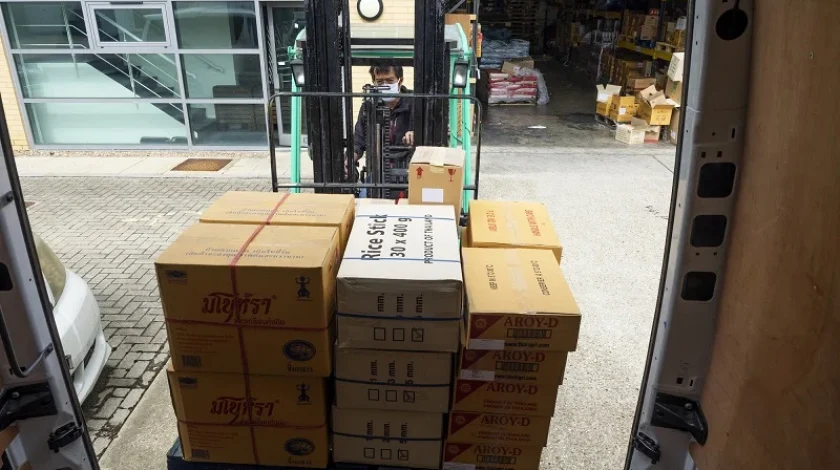It is an indisputable fact that COVID-19 has, and will, change the way we all do business. The impact of COVID-19 cannot be underplayed. Currently, and this changes daily, Australia has 6,875 confirmed cases of COVID-19 and 97 deaths. At the start of April, the Australian Bureau of Statistics cited that two thirds of Australian businesses reported a reduction in their turnover and nearly 50% had made changes to their workforce. So, where does this leave the future of Australian manufacturing and what will it look like post COVID-19?
The establishment of the National COVID-19 Coordination Commission was announced on 25 March 2020. It is chaired by Neville Power, who brings with him experience from the agribusiness and aviation spheres. Those in the manufacturing space are looking with interest towards this Commission’s direction and findings as to what this brave new world may look like. We know that the pandemic has exposed the degree to which Australia is dependent on imports, particularly from China. While manufacturers took into account a slowdown in supply of goods from China arising from Chinese New Year, no one foresaw the impact of COVID-19. This left manufacturers scrambling to seek alternative supplies of raw and other materials domestically.
WA Today reported Mr Power as saying on Perth radio that, “We have an opportunity that we can take out of this crisis to change that and put in new investment, new technologies, take advantage of our low dollar at the moment to restart a lot of manufacturing.” So while the most immediate focus is on the manufacture of essential goods, it also bodes well for a general focus on the Australian manufacturing industry post COVID-19 and the supply chain to that industry in terms of encouraging and investing in ways to boost Australian manufactured products.
However, this is not to say that an isolationist policy or mentality is being advocated. Australia’s ability to import and export is always key to its global status and ability to compete internationally. The suggestion for manufacturing is that we focus on what we are good at, play to our strengths and develop niche areas. This in conjunction with investment in new technologies, which may include AI for example, may see an upsurge in Australian manufacturing in real terms.
One thing is clear, Australian manufacturing will not emerge from COVID-19 unscathed. However, the pandemic may have provided an opportunity to review the industry and its supply chain in a different light. The industry was always there and could always provide quality products. However, cost prohibitive processes and raw materials made it difficult to compete. We never wish to be in this situation again.
How a Disaster Recovery Plan can help you adapt quicker
The ability to return to ‘Business as Usual’ will be influenced by a number of factors including the effectiveness of your Disaster Recovery Plan (DRP). This is different from a Business Continuity Plan that focuses on keeping operations functional during the event and immediately after. Rather than simply mitigate the risks, a DRP also looks at how you plan to get your business back to normal or back to where you started before the event. Most companies already have some form of a plan in place, but they don’t fully address the unpredictable variables of dealing with a pandemic outbreak such as coronavirus.
How manufacturers emerge from the crisis will be closely tied to their action planning. You need the right framework to respond and manage risk going forward. It’s critical to look at scenario planning and incident management. What will be the cost implications (both customer driven and organisational) and what opportunities can you identify specific to your industry. You then need to consider a range of factors – do your workforce plans align to the evolving market, do you have alternative supply chains and what are the financial and operational levers to help conserve and generate cash.
Looking forward, given how incredibly fluid the current situation is, it’s likely that we’ll see more demand-based supply chains and production lines. Data analytics will probably play a stronger role in helping control and reassess supply chains and uncover weak links. Companies will start to decouple their supply chains and invest in tools that make the process more transparent and predictable. This means manufacturers who have flexible supply chains can quickly shift production lines and will be able to reconfigure their operations every time it’s needed.
We’ve discovered that a lot of businesses are preparing their DRP ‘on the fly’. The shock and speed of the impact from COVID-19 had many organisations unable to act as fast as possible. In this current situation, it’s pointed out how critical it is to plan ahead. While there may be scenarios you’re unable to anticipate, a crisis plan sets the framework for your operations to be resilient and minimise downtime.
The role of collaborators & innovation
The uncertainties around the length and further effects of the virus has led to businesses quickly adapting to the new supply and demand. We’re hearing stories of perfume and gin manufacturers shifting to make sanitisers and other companies repurposing production lines to make visors. This is clearly not a long-term solution but is a demonstration of adapting for change and being innovative.
The long-term survival of manufacturing is still heavily dependent on collaboration. It’s become increasingly clear that businesses and industries need to come together to fight against COVID-19. Being able to leverage the collective intelligence and expertise from government, research bodies and academia have always been instrumental in unlocking innovation. There are countless successful joint R&D projects that have involved universities, industry partners and businesses.
David Chuter, IMCRC CEO and managing director, recently shared his insights on key areas to help build resilience in the current climate. He talked about the opportunities to engage with a university or the CSIRO to discover breakthrough ideas that can prepare your business for a future that is likely to be more localised, more sustainable and more collaborative.
Conclusion
Manufacturers are being forced to innovative and move fast. The pressure of disrupted supply chains, new market demands, and the shortage of medical supplies has created an unprecedented opportunity for our Australian manufacturers to deliver new solutions. To outlast COVID-19 and come out stronger, manufacturers need to diversify and fill the gaps in the market.
This article was co-authored by Coleman Greig’s Rebecca Hegarty and John Spender from William Buck. Coleman Greig, William Buck and St. George Bank collaborate to host the Western Sydney Manufacturing LAB which was developed to create a forum for individuals and businesses to network, exchange ideas, share experiences, make connections and access services that could lead to new strategic partnerships. For further information, please contact Rebecca Hegarty – rhegarty@colemangreig.com.au.














